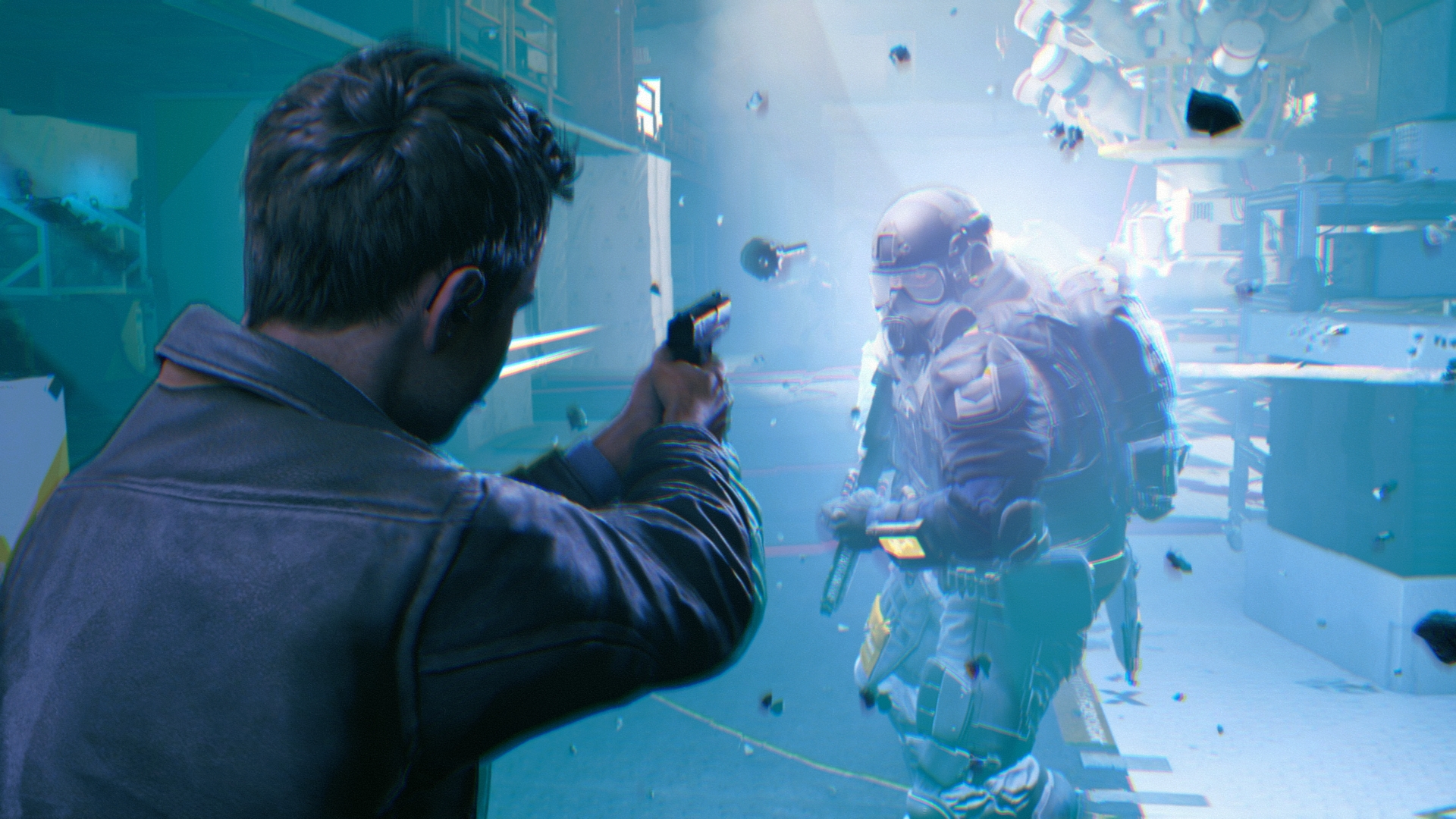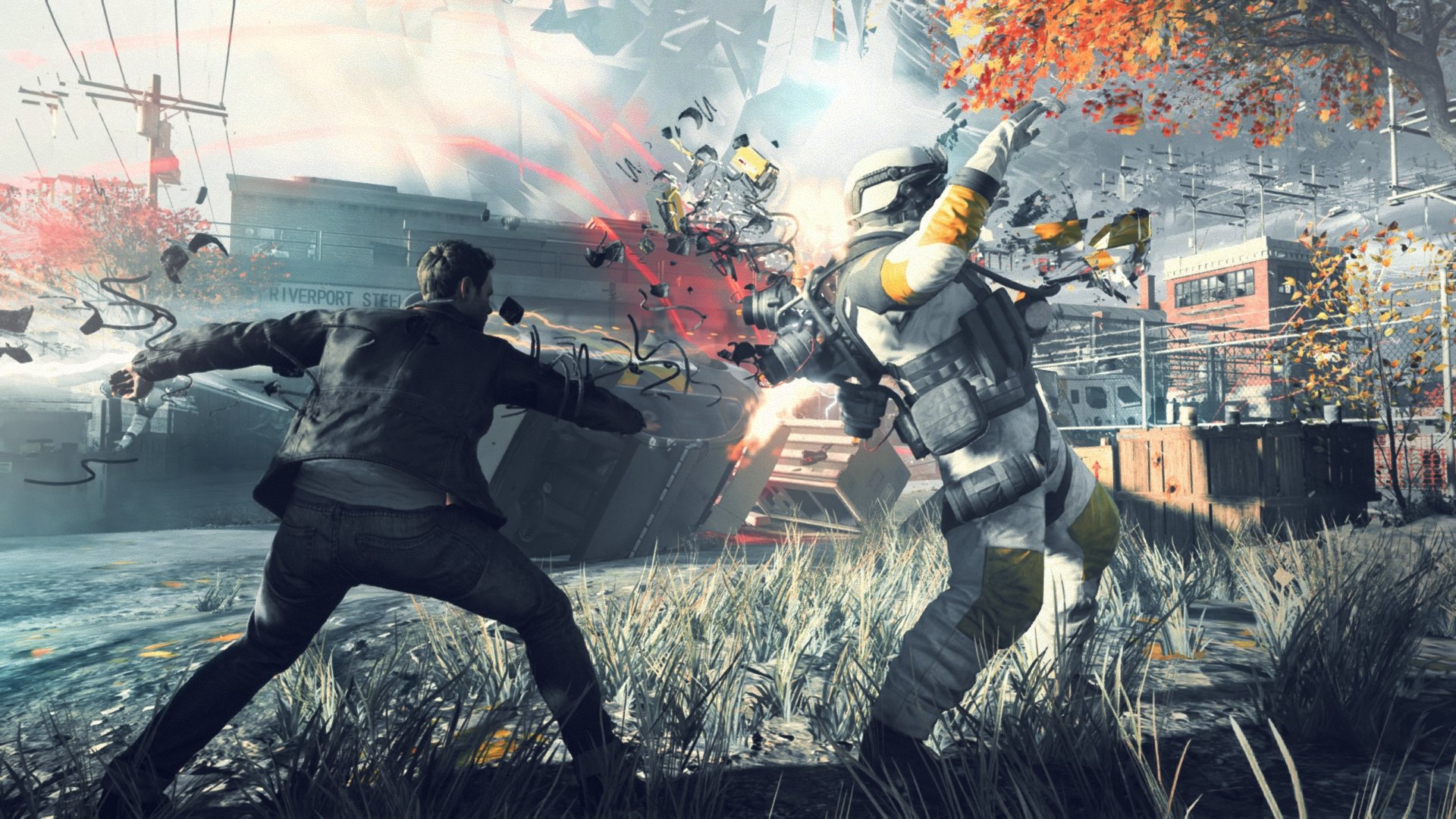Quantum Break is secretly a sweet Max Payne game
I don’t want to do anyone’s job for them, but I really feel like Quantum Break could do with at least one advert that drops the “interactive-next-gen-cross-media-TV-experience” schtick and just does the following:

For some reason I can’t quite fathom, this is the dark secret at the heart of the one-time Xbox One exclusive - that beneath its aspirations to change the way we play with our consoles (the last gasp of Microsoft’s all-in-one approach with new-gen), and the legitimately mesmerising facial capture of its Hollywood cast, it feels like the best straight-up shooter Remedy’s made since Max Payne 2. Having played the opening hours of the game, it’s a whip-crack mix of gunfeel, juicy superpowers and on-the-fly tactical decision-making that very few developers could hope to match.
On first impressions, it is also quite a poor TV show - but we all knew it would be that way, right? For now, let’s talk about the real revelation, about how /quick/ this game is - quick to throw you into the action, quick in the heat of the moment, and quick to throw new challenges at you.
Within the space of first couple of hours, hero Jack Joyce has four of the game’s five time powers at his disposal, a set of booming traditional weaponry (helped along by the Xbox One’s controller’s purring Impulse Triggers), you’ve fought a few different enemy types, and the game’s undermined your abilities at least once by throwing in Strikers, who can move as fast and erratically as you can. The message is clear - Quantum Break is an action game at heart, and wants you to understand how it works as quickly as possible.
It’s an unusual one too, ripping the Tomb Raider reboots’ dynamic cover system, then joyously laughing in your face as you realise that hunkering down is a huge mistake. “The AI’s core behaviours are there to push the player out of cover,” explains gameplay designer, Kyle Rowley. “There's lots of grenades, flanking, we have enemies that specifically get close, others that stay away and do suppressing fire.” The result is a game that keeps you moving - often at superhuman speed - constantly.

It also subtly transforms the Max Payne-style room clearing theatrics into something more tactical, but no less spectacular. With enemies rushing you, the Time Stop power - which initially seems like a way to more efficiently fill baddies’ bodies with foreign objects - suddenly reveals itself to be a battlefield management tool. Huge, armoured enemy causing you trouble? Freeze him and take care of all the little threats before going mano a mano. Defensive powers like Dodge and Shield also double up as melee attacks, which occasionally makes the game feel more like a brawler, sending you shooting between enemies, racking up invisible combo scores in your head.
Having played the first act in its entirety, plus a slice of the second, Quantum Break is revealing itself to be thrilling, pacey stuff, and the developers insist that it won’t get stale throughout the entirety of the five-act game. That’s partly down to the number of ways the game seeks to challenge your method of play - giving some enemies your powers, and others the ability to take them away - and partly in the way you can specialise as you go through, using hidden collectibles as the currency for an (entirely optional) power upgrade system.
Weekly digests, tales from the communities you love, and more

After seeing the first episode of the much-vaunted TV show (outsourced to an LA studio and made in conjunction with the game, each influencing the other), we might well grow a little tired of the non-gameplay segments, sadly. The 20-minute episodes are designed to show the game’s story from the perspective of those working for sinister corporation Monarch, but the first episode felt more like set-up for about four more protagonists, each duller than Jack Joyce in different ways. It has the whiff of the Arrow B-plot about it, a one-note drama disguised as a superhero thriller.
Even the supposed interactivity of the episodes feels a smidge phoned in. Every ones preceded by a Junction section, snapshots of gameplay in which you take control of antagonist Paul Serene (played by Aiden Gillen doing his best Robert Downey Jr. impression) and play out what feels like a tiny Telltale game. Investigating environmental elements unlocks “Quantum Ripples” - think “they will remember that” - before you’re invited to make a choice that will affect the future of the both the game and show. How much the game will change remains to be seen - although a simple character swap in an otherwise identical Act 2 opening doesn’t bode well - but the show certainly doesn’t feel unduly altered as a result with, at most, a quarter of the scenes changing.

This might be unfair - the opening of any show has to do due diligence in introducing its key players - but the rigid structure (every Act contains three Jack Joyce sections, a Junction and a TV episode, in that order) suggests Remedy have designed it specifically for the TV sections to be skipped, which, indeed, they can be.
It’s testament to just how much fun that core gameplay is that you’ll feel tempted to do so. Remedy may well have failed to reinvent the digital wheel here, but did anyone really want the studio that almost exclusively makes twisted takes on third-person shooters to do so? Behind the bluster, we seem to have a worthy new-gen expansion of Max Payne’s core ideals; of gunplay and time manipulation, and pulpy genre fiction - the very stuff that made Remedy famous in the first place. If that’s to be Quantum Break’s true legacy, I’m more than happy to get behind it.



